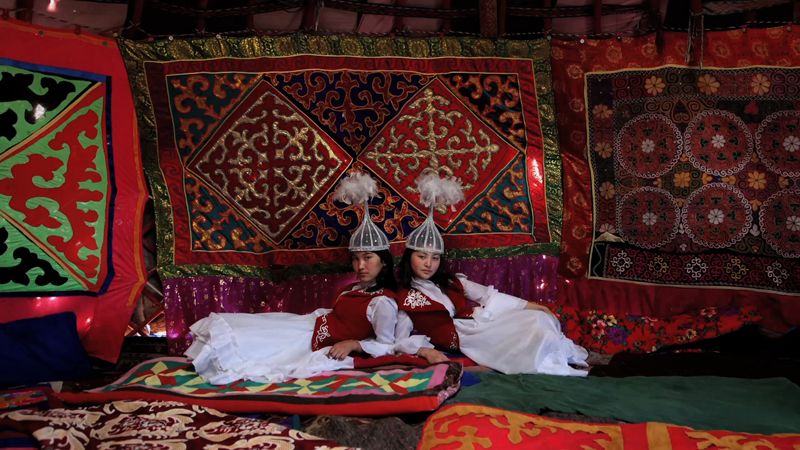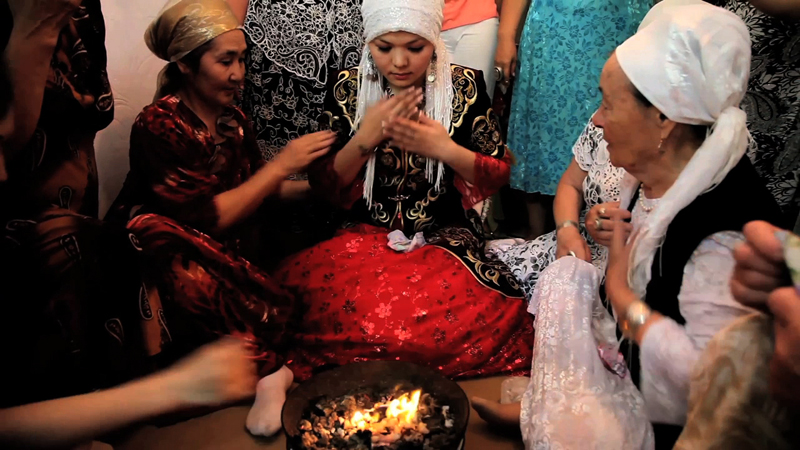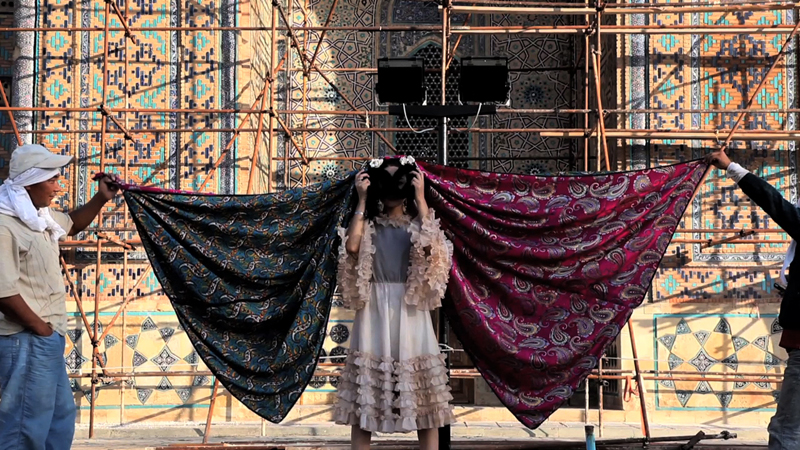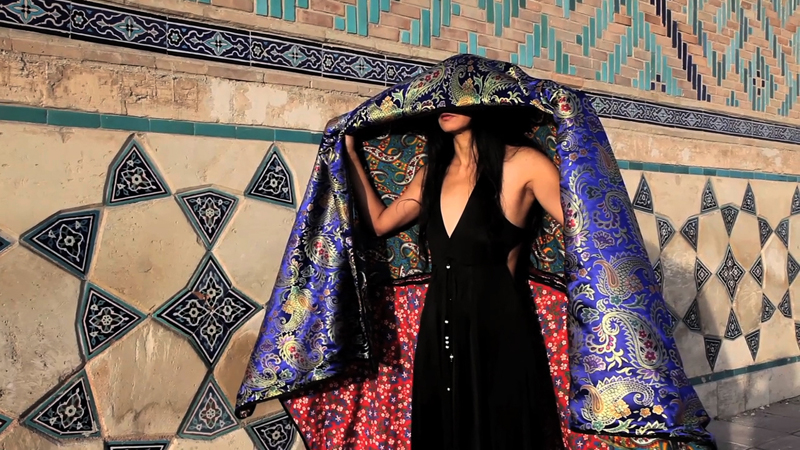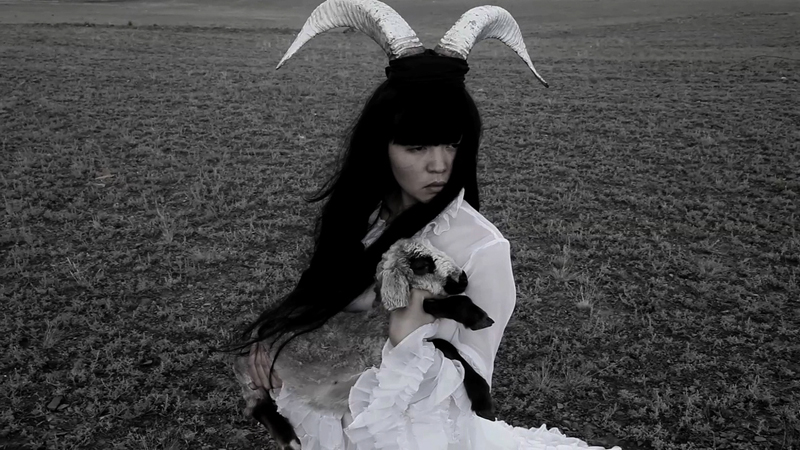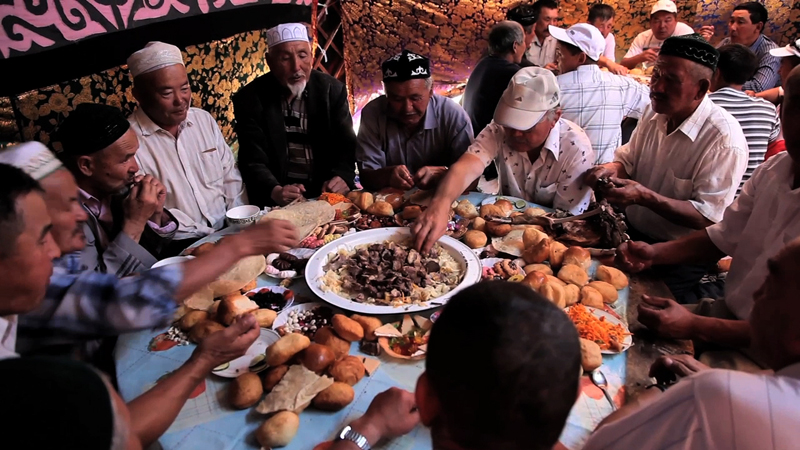Almagul Menlibayeva at Priska Juschka Fine Arts (Exhib. Review)
Almagul Menlibayeva, Daughters of Turan, Priska C. Juschka Fine Art, New York
Daughters of Turan is an exhibition of recent video and photographic work by Almagul Menlibayeva that introduces the viewer to the history and culture of the artist’s native Kazakhstan. Menlibayeva has cited video and performance artist Nezaket Ekici from Turkey as her one of the artists who have influenced her. Like Ekici Menlibayeva shows old rituals in contemporary interpretations. Instead of subverting tradition, Menlibayeva aims to demonstrate that the traditional and the modern (such as popular culture) can mutually enrich each other.
For Menlibaeava this is already her third exhibition at the gallery. Over the past three years she has developed a strong pictorial sensibility. Born in 1969, Menlibaeava was brought up during the last decade of the Soviet empire and now draws on this history to define the changes that occurred in Kazakhstan after it assumed independence two decades ago. The artist received her formation through with the canon of Social realism at the Art Academy in Almaty and carries over from this education a poetic vision of landscape coupled with ethnographic references.
At the center of Menlibayeva’s work lies the crisis of national identity, which has been widely acknowledged by Kazakh intellectuals. For the series Daughters of Turan, Menlibayeva visited remote areas in southern Kazakhstan. The fact that local people make an annual pilgrimage to a series of mosques during the month of Ramadan (hadji) prompted her to stage the work as a fusion of the past and the present. Menlibayeva often collaborates with the conceptual composer OMFO (Our Man From Odessa) who like her is concerned with finding a new language to speak about traditional culture. OMFO, who also wrote for the controversial movie Borat, combines Eastern pentatonic scales with sounds made by electronic instruments.
The video Aisha Bibi’s Butterflies (2010) unfolds against the finely carved limestone walls of the Aisha Bibi mausoleum, which is located near the Kazakh city of Taraz. The work references an ancient love story between the noble beauty Aisha Bibi and the wealthy warlord Karakhan. Menlibayeva dresses young Bibi and the other women who make their appearance in the film in traditional dress.
One of them carries a tiara-like turban constructed from dozens of small soft elements, while others wear richly patterned pink, blue or green silk fabrics wrapped around their bodies like veils. All of these women are the artist’s friends or relatives rather than professional models. A skillful stage designer in her own right, Menlibayeva sketches her models’ positions prior to shooting and proceeds like an anthropologist when she searches for her fabrics at the local market. ??????? ?? ??????? ?????????? ??????? ??? ??????? – ????????? ??????? ????? , ? ??????? ????????? ????? ??????? ????? ? ????????, ?????????? ????, ? ?????????? ?????????!
The artist has blamed the loss of traditions in Kazakhstan on the two decades of post-Soviet independence. She has said that even though Soviet policies were manipulative, local culture was even more affected (and hurt) by the desire for entertainment imported from the West after the end of Soviet rule. Her Milk for Lambs (2010) is composed of both black-and-white and color frames. It tells the story of the heavenly god Tengri and the festival of the memory of the ancestors. The rituals–involving a cockfight and the sacrifice of a lamb–conclude with a lavish fiesta and some leisurely tea drinking.
Several of the festive gatherings take place inside traditional dwellings that the artist shoots in color, complete with red and yellow rags from floor to ceiling. In contrast, the harsh steppes and deserts are filmed in tones of gray. In Milk for Lambs Menlibayeva captures several rites of passage: an old man lies on the ground with a baby lamb resting on his shoulder; a little boy stands naked in the steppe with clouds scudding across the horizon. When he grows up he will take care of animals in the same way as the older boy in the next frame who is holding a lamb to his chest. At the film’s end night falls and the camera follows the endless road as the subtitles allude to the god who welcomes these people. Menlibayev implies that it is their destiny to follow tradition and remain close to nature.
While the majority of Kazakh artists work in relative isolation and far removed from the contemporary art scene, Menlibayeva says that her “nomadic” lifestyle – she lives and works in Almaty and Berlin – offers “a productive distance to her original culture and a language for its poetic interpretation.” The crisis of cultural identity enforced by economic disparities, nationalism, and patriarchy presents the thematic backdrop for Menlibayeva’s work. Her videos and the (related) stills she mounts in light boxes on the walls are designed to show the world her remote culture while at the same time staying clear of exoticist stereotypes.

